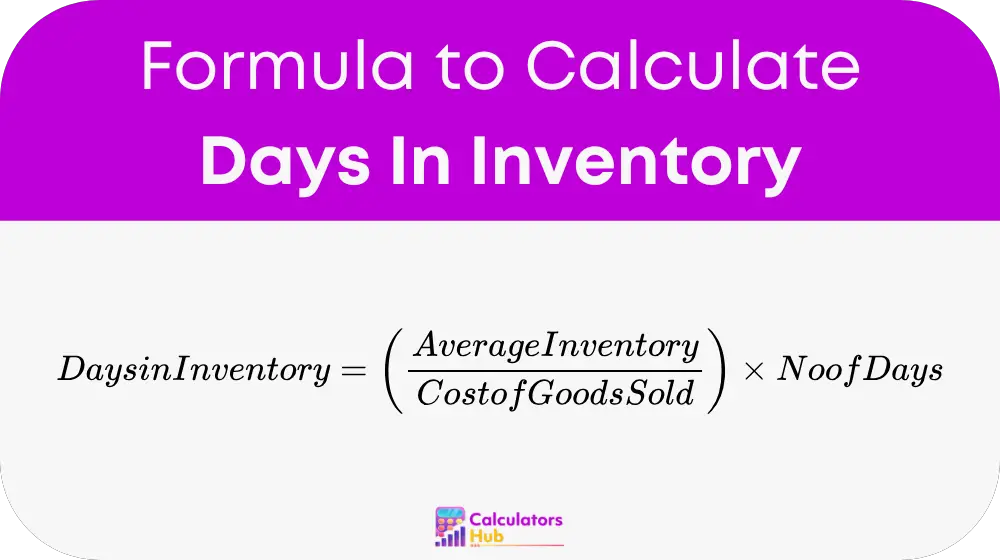Le Calculateur de jours d'inventaire aide les entreprises à déterminer la average number of days inventory remains in stock before being sold. This metric is essential for understanding inventory turnover, operational efficiency, and cash flux gestion.
ACTIVITES benefits of calculating days in inventory:
- Aide les entreprises optimize stock levels and reduce holding costs.
- Aide à identifier slow-moving inventory that may need discounts or promotions.
- Fournit un aperçu de efficacité de la chaîne d'approvisionnement and demand forecasting.
- Aide les entreprises compare inventory performance across different periods or competitors.
Un inférieur days in inventory value means faster turnover, while a higher value may indicate overstocking or weak sales performance.
Formula for Days In Inventory Calculator
The standard formula for calculating days in inventory est:

Où :
- Inventaire moyen = (Beginning Inventory + Ending Inventory) / 2
- Coût des marchandises vendues (COGS) = Total cost of goods sold during the period
- Nombre de jours = Période longueur (e.g., 30 for a month, 365 for a year)
Days In Inventory Reference Table
Le tableau ci-dessous fournit common industry benchmarks for days in inventory:
| Industrie - | Jours moyens en inventaire |
|---|---|
| Vente au détail | 30-60 jours |
| Automobile | 50-90 jours |
| Biens de consommation | 40-80 jours |
| Technologie | 20-50 jours |
| Fabrication | 60-120 jours |
These figures vary based on industry trends, demand, and supply chain efficiency.
Example of Days In Inventory Calculator
Scenario: Calculating Days In Inventory for a Retail Business
A retail store has the following data for the year:
- Inventaire de départ : $50,000
- Inventaire final : $40,000
- Coût des marchandises vendues (COGS) : $300,000
- Period Length: 365 jours
Step 1: Calculate Average Inventory
(50,000 + 40,000) / 2 = $45,000
Étape 2 : appliquer la formule
(45,000 300,000 / 365 XNUMX) × XNUMX = 54.75 jours
The business holds inventory for an average of 54.75 days before selling it.
FAQ les plus courantes
Un inférieur days in inventory ratio is usually better because it indicates fast-moving stock and efficient operations. However, the ideal value depends on the industrie et modèle d'affaires.
Businesses can improve this metric by enhancing demand forecasting, streamlining supply chains, and reducing excess stock. Des stratégies telles que gestion des stocks juste à temps (JIT) can help optimize stock levels.
Yes, a high value may suggest slow sales, overstocking, or supply chain inefficiencies. Il peut conduire à higher storage costs and product obsolescence.